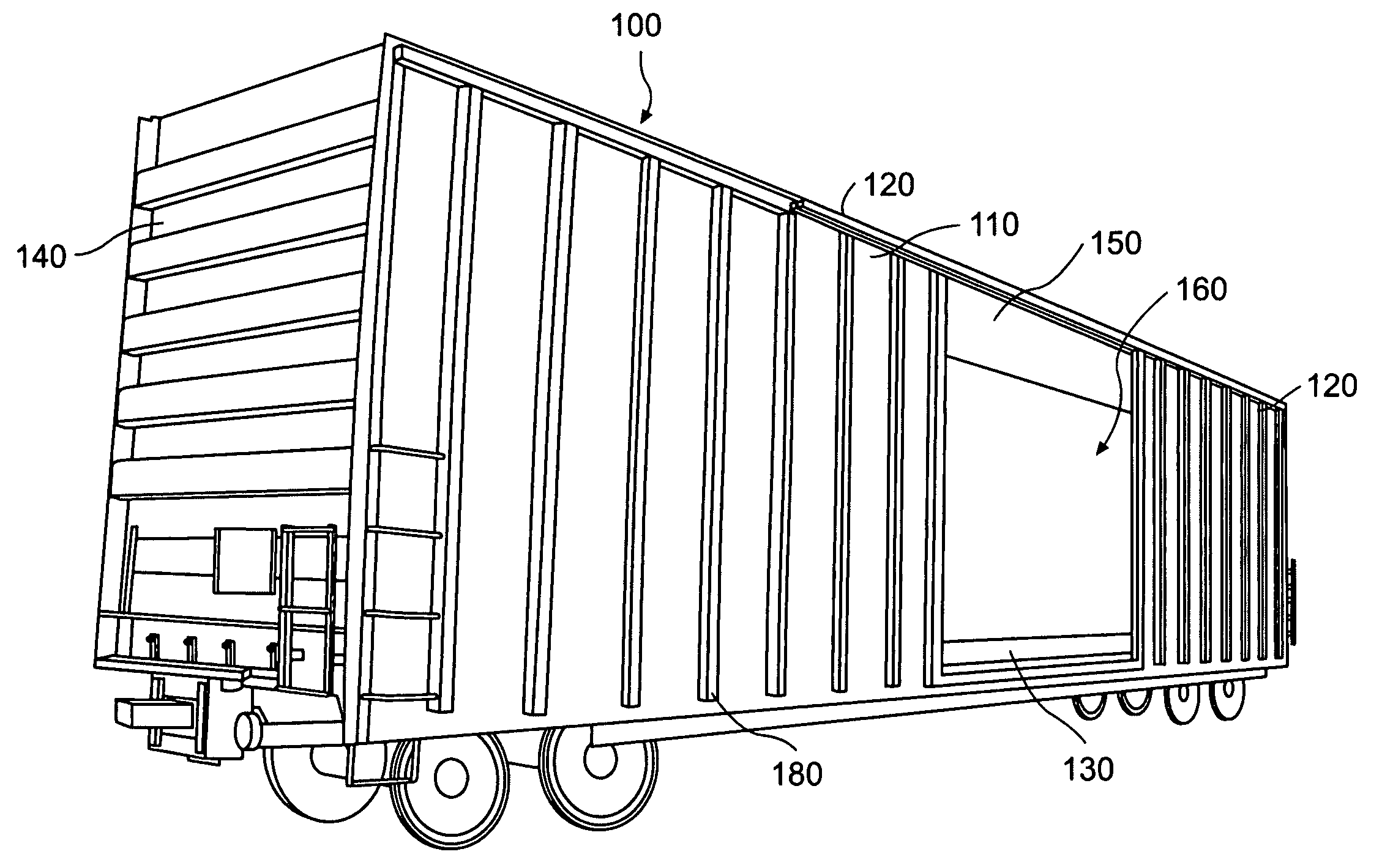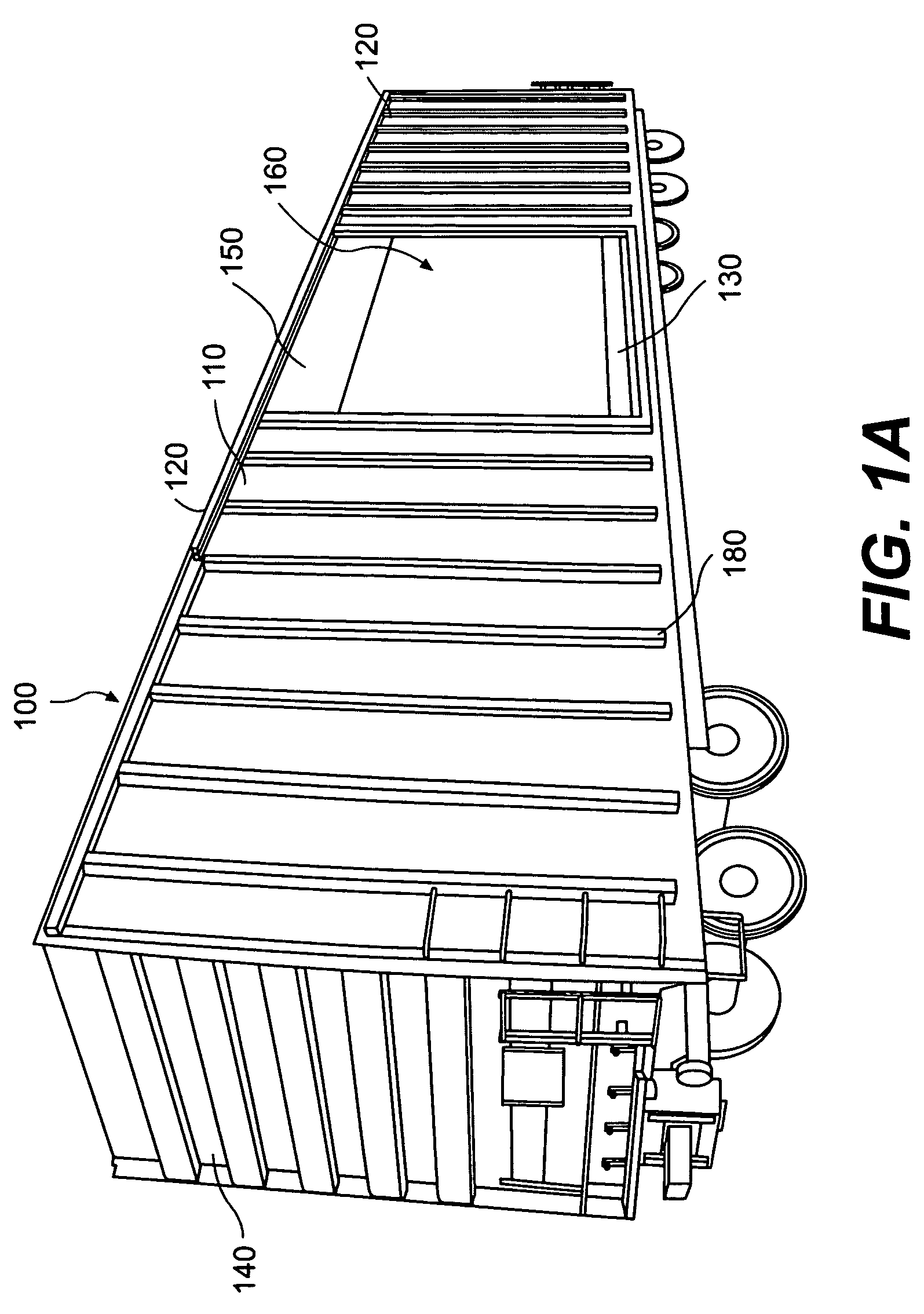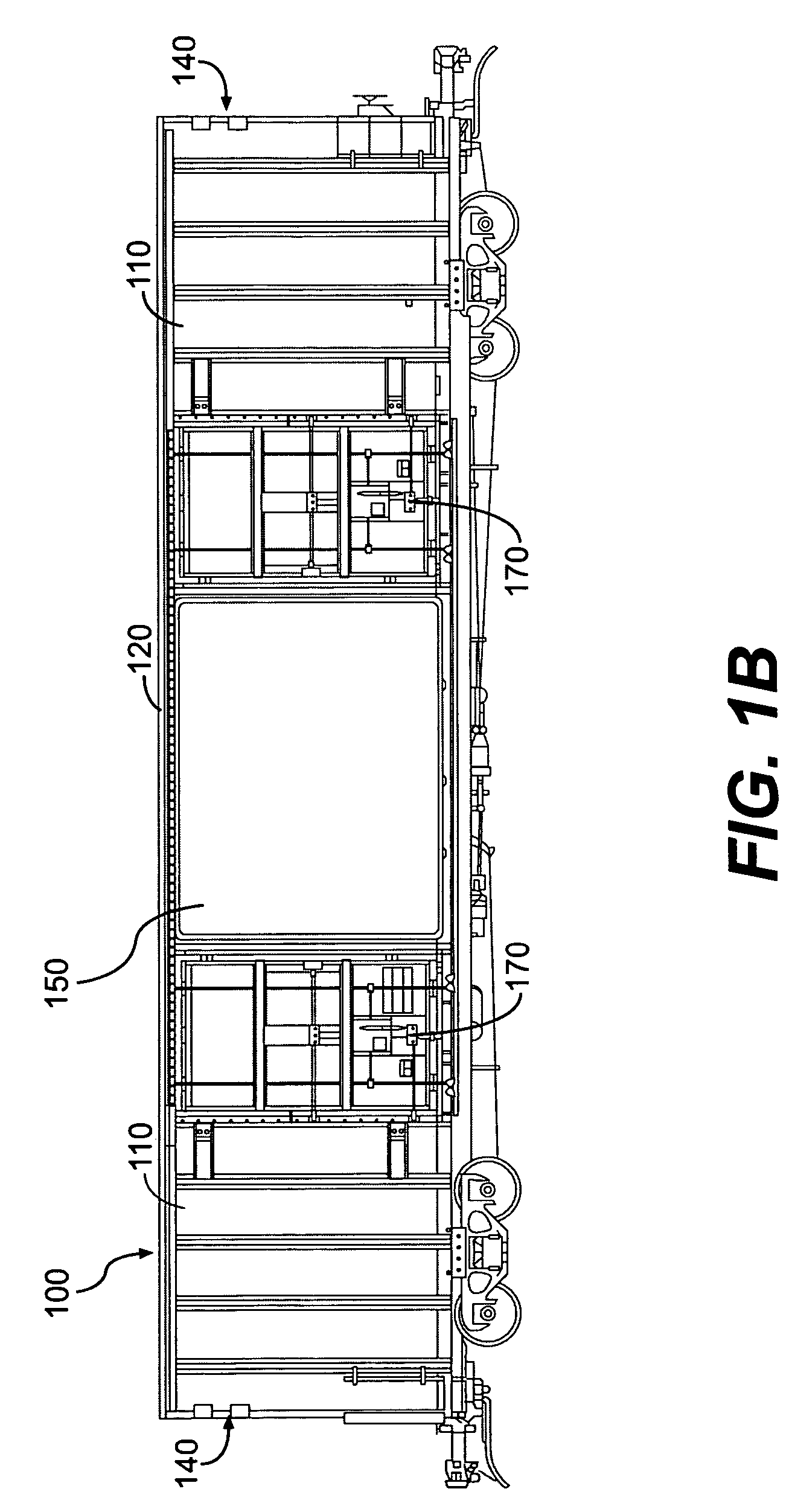Insulated cargo containers
a cargo container and insulating material technology, applied in the field of insulating cargo containers and insulated or refrigerated cargo containers, can solve the problems the thermal efficiency of the cargo container of this type is not as high as the user's desire, and the interior dimensions of the cargo container are reduced. , the effect of reducing the interior dimensions of the cargo container
- Summary
- Abstract
- Description
- Claims
- Application Information
AI Technical Summary
Benefits of technology
Problems solved by technology
Method used
Image
Examples
Embodiment Construction
[0050]A. Introduction
[0051]As described below, methods and apparatus consistent with the present invention will now be described with respect to the modification of one embodiment of an existing cargo container: a boxcar. The invention as claimed, however, is broader than boxcars and extends to the modification of other large insulated cargo containers, such as, shipping containers used on seagoing container vessels, truck trailers, straight trucks, refrigerated buildings, or the like.
[0052]FIGS. 1A-1B illustrate a boxcar to be modified consistent with one embodiment of the present invention. FIGS. 2-32 illustrate methods of modifying the existing boxcar consistent with embodiments of the present invention. As discussed, however, the methods illustrates in FIGS. 2-32 can be applied to other cargo containers.
[0053]B. Apparatus and Methods
[0054]FIGS. 1A-1B illustrate two views of a boxcar. A boxcar is an enclosed rail car used to transport freight. As shown in FIGS. 1A-1B, a boxcar 10...
PUM
 Login to View More
Login to View More Abstract
Description
Claims
Application Information
 Login to View More
Login to View More - R&D
- Intellectual Property
- Life Sciences
- Materials
- Tech Scout
- Unparalleled Data Quality
- Higher Quality Content
- 60% Fewer Hallucinations
Browse by: Latest US Patents, China's latest patents, Technical Efficacy Thesaurus, Application Domain, Technology Topic, Popular Technical Reports.
© 2025 PatSnap. All rights reserved.Legal|Privacy policy|Modern Slavery Act Transparency Statement|Sitemap|About US| Contact US: help@patsnap.com



